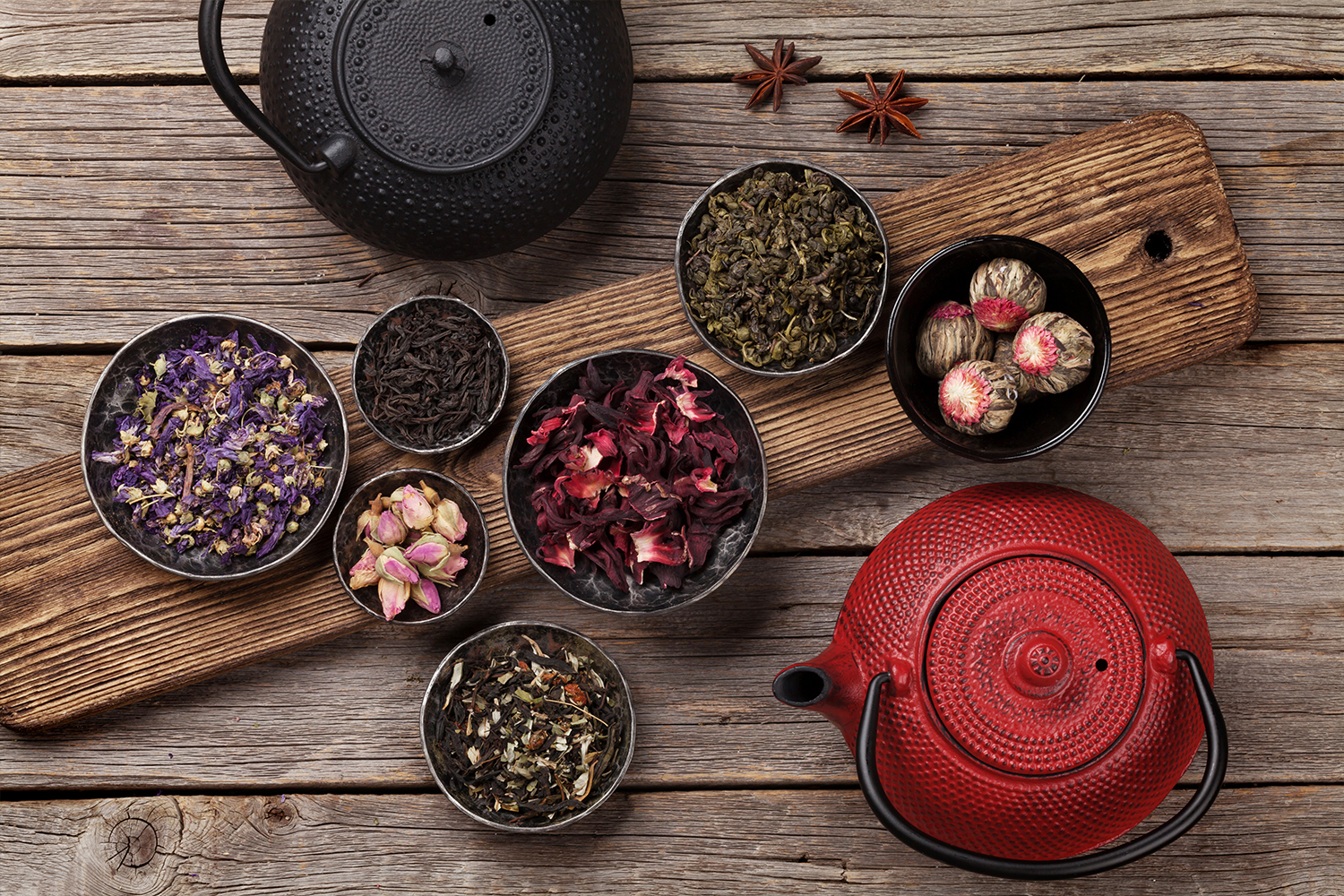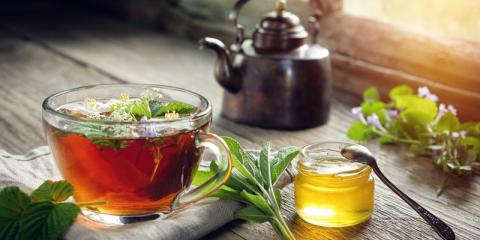For decades, study after study has proven the seemingly endless benefits of drinking tea. Just check out these articles on the physical benefits and mental health benefits.
Most recently, a 2020 study from the European Society of Cardiology concluded that those who drink tea daily live longer than those who don’t.
While the study of over 100,000 participants revealed that those who habitually drink green tea live the longest, it also concluded that general tea drinkers had lower risk of cardiovascular risks and many health-related causes of death.
However, drinking tea is easier said than done. Why? Because there are so many different teas out there.
When visiting your local grocery store, you’ll likely see a tea for every occasion. For example, you might find sleepy-time teas, teas for energy or teas for stress relief.
If you’re new to drinking tea, all of the choices could overwhelm you.
9 Types of Tea to Try
To help you in your quest to find the right tea for your lifestyle and health needs, here’s a guide to some of the most common teas with scientifically-backed health benefits.
-
Green Tea
Green tea is one of the most popular teas. It’s also one of the healthiest, contributing to benefits all over the body.
For example, green tea has been linked to healthy weight loss and disease prevention. Specifically, medical studies show that the tea can improve heart health, boost metabolism, relax the body and lower cholesterol.
-
White Tea
Despite its name, white tea is actually a form of green tea. While green tea stems from Japan, China and Morocco, white tea primarily stems from China. Green and white tea provide similar nutritional benefits. Particularly, they both have catechins — antioxidants that benefit overall health.
Like green tea, studies show that white tea can aid those with cardiovascular diseases, assist with weight control, protect against neurodegenerative diseases and benefit those with type 2 diabetes.
The primary difference between green tea and white tea is how the two are made. White tea’s buds are harvested at an earlier age than green tea buds. From there, white tea sees less processing than green tea. Because of this process, researchers believe that white tea provides more antioxidant compounds and stronger nutritional value.
-
Black Tea
Black tea is more fermented and bitter than white or green tea, but has been associated with some sweet health benefits — especially to those focused on improving their heart and mind. Studies show that regular black tea consumption benefits heart health, cholesterol levels and muscle mass.
Despite the benefits associated with black tea, research shows that only eight percent of people prefer it over other teas. Because of its bitter taste, many prefer to drink it with milk or other additives that are thought to counteract the antioxidant benefits it does offer.
-
Matcha Tea
Matcha is a Japanese green tea which has been used in zen rituals of Buddhist monks for thousands of years.
Although green tea is known to provide major health benefits, one glass of matcha has ten times the nutritional value of green tea. The tea is filled in antioxidants, vitamin A, and vitamin C which can improve your metabolism, mood, and overall health.
While antioxidants promote mental, heart health, and health metabolic rates, vitamin C is considered an immune-booster while vitamin A benefits skin.
-
Oolong Tea
Oolong tea cannot be classified as a green or black tea, but has a few benefits of each type. Like green tea, oolong can assist with brain and heart health. It also can strengthen dental health.
Studies also show oolong can ease symptoms of Type 2 diabetes and prevent against certain types of cancer.
-
Chamomile Tea
Many people know chamomile tea can be helpful for boosting immunity while easing some cold symptoms. But, did you know it can also help you get a good night’s sleep?
Chamomile tea is filled with nutrients and essential oils that relax muscles and central nervous system. Ultimately, these nutrients can ease stress, relax the body, and encourage a sound sleep.
-
Ginger Tea
Ginger tea is known primarily for its yummy taste and digestive benefits. Nutrients in the tea can ease an upset stomach caused by illness, poor digestion or motion sickness
The tea’s chemicals that stimulate saliva, bile and gastric secretions that improves digestion by boosting muscle contractions that help food move through the body.
Aside from the benefits above, ginger can also help prevent stomach muscle spasms that result in diarrhea. Additionally, when ginger tea is mixed with other healthy ingredients, it can soothe a sore throat or cough.
-
Peppermint Tea
Like ginger tea, peppermint tea also provides a unique taste while boosting the digestive system.
Peppermint tea enables bile and food to better travel through the stomach and can soothe digestive issues like upset stomach, flatulence, nausea, diarrhea.
While ginger may be tasty and helpful for children with stomach aches, peppermint should only be consumed by older children and adults. Peppermint may also irritate those with gastroesophageal diseases.
-
Hibiscus Tea
Hibiscus is a red and fruity tea that stems from Mexico, the Caribbean, and Central America. Research shows that it can help with hypertension, cholesterol, high blood sugar, and urinary tract infection. Some say it can also ease sore throats when mixed with honey.
Picking the Right Tea for Your Lifestyle
As a conscientious shopper, you might also look at a box vaguely titled as “Weight Loss Tea,” and ask yourself, ”what’s in this?”, or “should I actually be drinking this tea?”
-
What Benefits of Tea Do You Want?
As you navigate the tea aisle in your local store, or consider ordering a box online, it’s important to determine the what tea best aligns with your goals.
For example, if you’ve been working out and want a tea that fits within your weight loss diet, you might want to try a green, white or matcha tea.
If you have a fast-paced work life and need to slow down when you get home, you could consider a hibiscus or chamomile tea for relaxation.
-
Health Concerns or Complications
If you plan to drink a tea daily, you should also be sure to research possible health interaction.
For example, those who drink black tea regularly should remember that some additives — such as milk — might counteract the health benefits.
Similarly, those with gastroesophageal issues may want to avoid peppermint teas.





